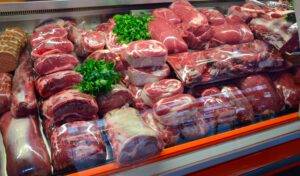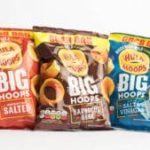
The price of British lamb has surged to unprecedented levels, driven by a combination of adverse weather conditions, disease, import challenges, and increased demand.
According to the Agriculture and Horticulture Development Board (AHDB), wholesale prices have risen by over 40% year-on-year, reaching more than £8.50 per kg. This price hike comes alongside a forecasted 1.4% decrease in UK lamb production this year.
In the past three months, UK demand for lamb has risen by 8%, bolstered by Easter and Eid celebrations where lamb is a traditional centrepiece. British supermarkets are also facing stiff competition from overseas buyers, particularly from France, which is contributing to the rising prices.
David Swales, head of economic analysis at the AHDB, noted the extraordinary market conditions, stating, “After 14 years at the agricultural body, I have never known a market like this.” Swales explained that the confluence of several factors has created a “perfect storm,” driving up prices.
Adverse cold and wet weather conditions have led to higher lamb mortality rates early in the season, and there are growing concerns about the Schmallenberg virus, which has been affecting sheep in the south of England, Wales, and the Midlands.
While the price of British lamb is soaring, New Zealand lamb has seen a price drop of about 20% year-on-year, now costing less than £3 per kg. This decrease is attributed to a glut of Australian lamb on global markets and reduced orders from China. Additionally, new trade deals have removed tariffs on a larger quantity of Australian and New Zealand lamb, allowing it to be sold more cheaply in the UK. However, imports have been disrupted by attacks on Red Sea cargo ships by Yemen-based militants, delaying shipments.
The volatile market conditions have led Morrisons, the UK’s fifth-largest supermarket and a significant buyer of British lamb, to reconsider its sourcing strategy. Morrisons has announced a trial of New Zealand lamb in 39 stores, ending a seven-year commitment to selling 100% British lamb.
A Morrisons spokesperson explained, “The trial follows an extensive exercise listening to customers who were very clear that they want us to sell lamb at a more accessible price all year round. The blunt commercial reality is that New Zealand lamb is cheaper to source, and therefore cheaper to sell, than British lamb.”
Despite the trial, Morrisons assured that it will continue to sell 100% British lamb at its butchers’ counters and clearly label New Zealand lamb in trial stores to allow customers to make informed choices. The supermarket also stated that this move does not signify a reduction in the overall volumes of lamb purchased from British farmers.
Other supermarkets, including Waitrose, Marks & Spencer, and the Co-op, have affirmed their commitments to 100% British lamb. However, industry experts suggest that they may face similar pressures to adapt their sourcing policies.
The National Farmers Union (NFU) expressed disappointment, with livestock board chair David Barton commenting, “It’s all the more disappointing that our own homegrown lamb is likely to be replaced by products from overseas with significant food miles and produced to potentially lower standards.”
Phil Stocker, chief executive of the National Sheep Association (NSA), criticized the timing of Morrisons’ announcement, which coincided with Rishi Sunak’s Farm to Fork Summit aimed at supporting UK agriculture. Stocker remarked, “This is a very poor decision, and something NSA warned could happen during the negotiations around the new trade deals agreed with Australia and New Zealand last year.”
As the market continues to navigate these challenging conditions, the future of British lamb production and its pricing remains uncertain, with both producers and retailers adapting to rapidly changing circumstances.
Read more:
Cost of British Lamb Soars Amid Rising Demand and Import Issues




